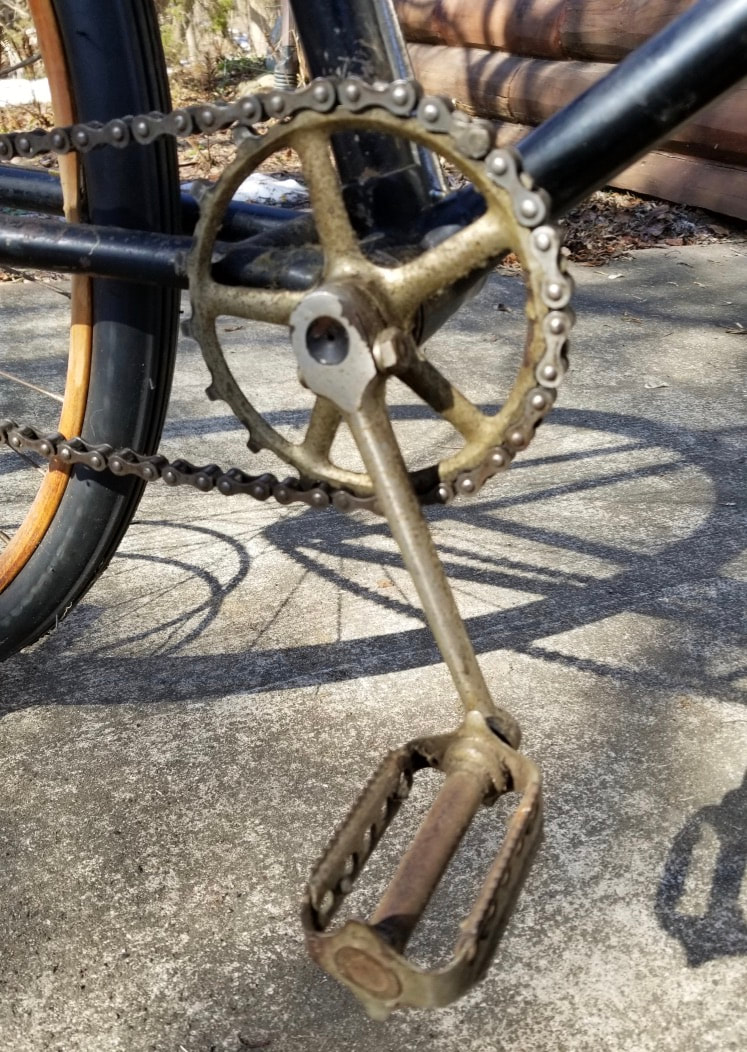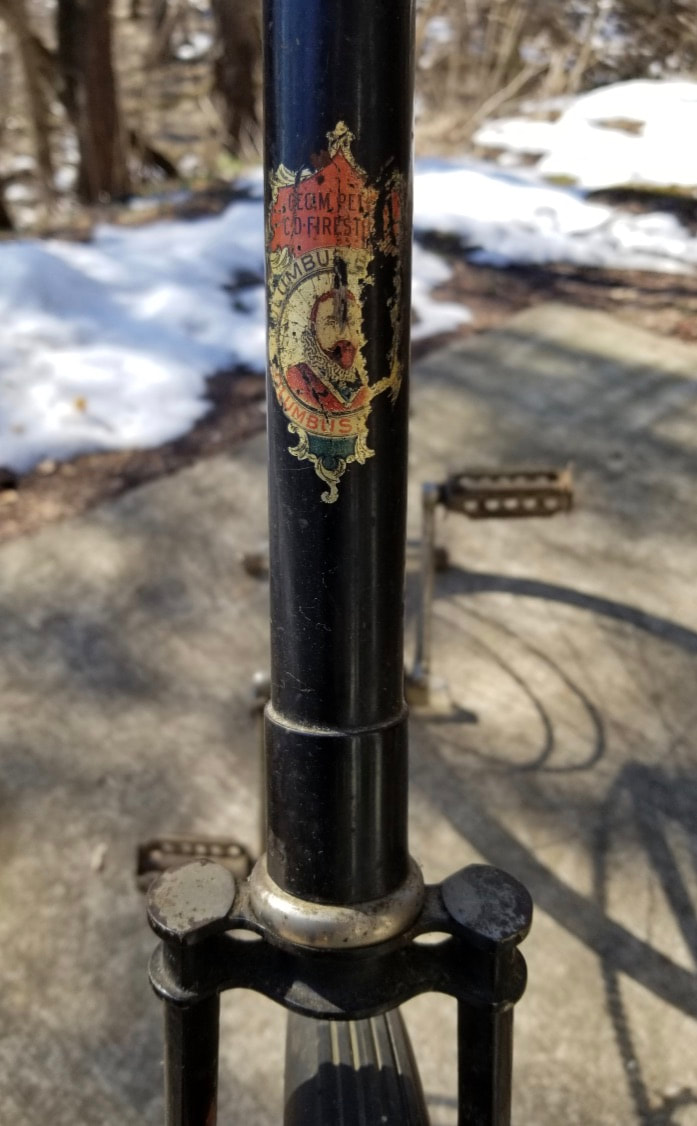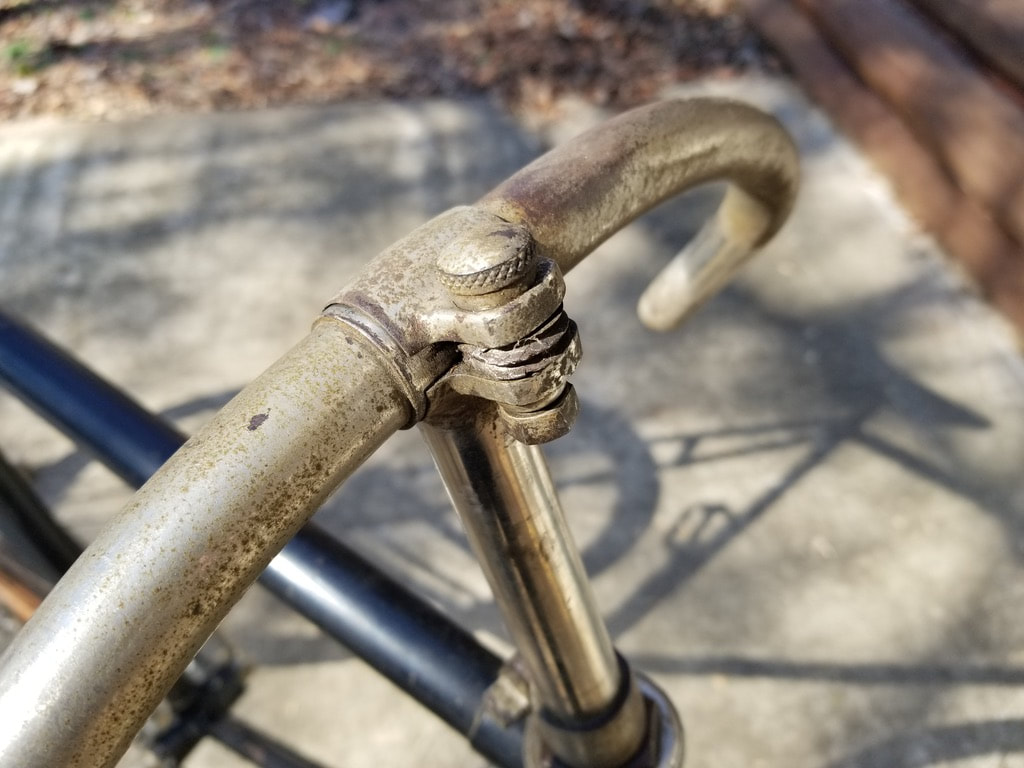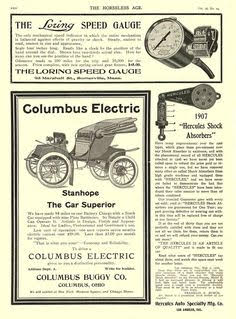I was riding beside bicycle icon Calvert Guthrie of Kansas City in a Saint Patrick's Day Parade many years ago when I took special notice of his elegant 1890s wheel. It was the only Columbus Bicycle Company bike I had ever seen (and since this time, I've found only one other, owned by Fred Fisk of The Wheelmen). Having been born in Columbus, Ohio, I began a years-long campaign of subtle and not-so-subtle hints to my friend Calvert that if he could ever bring himself to part with the Columbus, I would love to be the new owner.
Years later the dream came true; Calvert sent the bicycle my way. Today it holds a very special place in the collection. Thank you, Calvert!
My Columbus bicycle was manufactured some time in the mid to late 1890s by the Columbus Bicycle Company, a subsidiary of the Columbus Buggy Company of Columbus, Ohio. Created in 1875 by Clinton Firestone and his partners, George and Oscar Peters, the Columbus Buggy Company enjoys a colorful and important history spanning the horse-drawn vehicle to the bicycle to the electric automobile.
At its height the Columbus Buggy Company employed 1,200 people and produced 100 buggies a day, sold in every state of the union. I like to think that my grandfather, Dr. Arthur King Buell, made his first house calls as an M.D. in a Columbus buggy. The precise date of the Buggy Company's decision to join the great American bicycle boom of the 1890s and manufacture the Columbus Bicycle is still to be determined.
Clinton Firestone's nephew, Harvey Firestone, worked as a salesman for the company until asked by Henry Ford to develop racing tires for the automobile. Harvey went on to form the tire company that still bears his name. Another Columbus Buggy Company employee was the legendary Eddie Rickenbacker, World War One American fighter ace and Medal of Honor winner with a record 26 aerial victories, who would earn even greater fame as one of the great race car drivers of his age.
Note the partial transfer on the head tube of the Columbus bicycle. You will see the same image of Christopher Columbus pictured on the Columbus Buggy Company trade card of 1892 (below).
A unique feature of the Columbus bicycle is the special stem with integrated turn-screw for handlebar adjustment.
Years later the dream came true; Calvert sent the bicycle my way. Today it holds a very special place in the collection. Thank you, Calvert!
My Columbus bicycle was manufactured some time in the mid to late 1890s by the Columbus Bicycle Company, a subsidiary of the Columbus Buggy Company of Columbus, Ohio. Created in 1875 by Clinton Firestone and his partners, George and Oscar Peters, the Columbus Buggy Company enjoys a colorful and important history spanning the horse-drawn vehicle to the bicycle to the electric automobile.
At its height the Columbus Buggy Company employed 1,200 people and produced 100 buggies a day, sold in every state of the union. I like to think that my grandfather, Dr. Arthur King Buell, made his first house calls as an M.D. in a Columbus buggy. The precise date of the Buggy Company's decision to join the great American bicycle boom of the 1890s and manufacture the Columbus Bicycle is still to be determined.
Clinton Firestone's nephew, Harvey Firestone, worked as a salesman for the company until asked by Henry Ford to develop racing tires for the automobile. Harvey went on to form the tire company that still bears his name. Another Columbus Buggy Company employee was the legendary Eddie Rickenbacker, World War One American fighter ace and Medal of Honor winner with a record 26 aerial victories, who would earn even greater fame as one of the great race car drivers of his age.
Note the partial transfer on the head tube of the Columbus bicycle. You will see the same image of Christopher Columbus pictured on the Columbus Buggy Company trade card of 1892 (below).
A unique feature of the Columbus bicycle is the special stem with integrated turn-screw for handlebar adjustment.
1890s Columbus Bicycle ©Daniel Dahlquist















